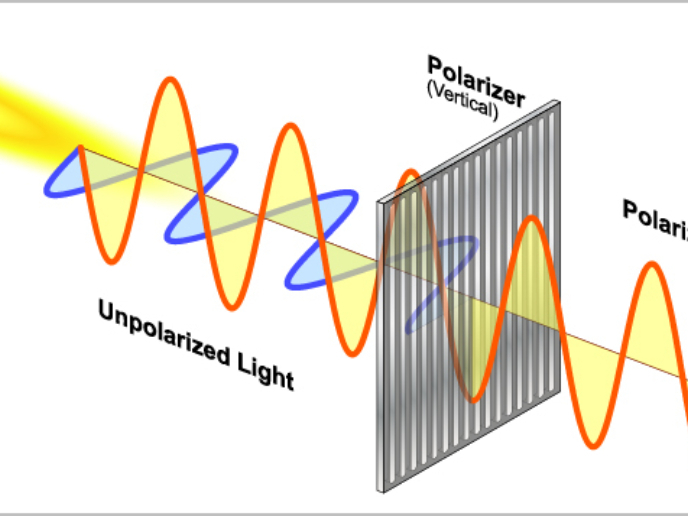‘Filming’ polarised light in both space and time
Sunlight and almost every other form of natural and artificial illumination is composed of light waves whose electric field vectors vibrate in a plane perpendicular to the propagation direction. If the direction of the electric field vector is well defined – i.e. does not fluctuate randomly in time – the light is polarised. The most common source of polarised light is a laser. “Unlike the frequency and the temporal duration of light pulses produced by a laser, polarisation(opens in new window) is a less intuitive yet fundamental property of light that can greatly determine how light and matter interact. For example, a light beam with a particular polarisation can be perfectly transmitted through glass, without reflection. Normal (unpolarised) light always experiences some partial reflection – this is why we can distinguish a glass door or a window even though they are transparent,” explains Helder Crespo, coordinator of FastMeasure(opens in new window), a project funded under the Marie Skłodowska-Curie programme and lead by the fellow Benjamín Alonso.
Novel measurement technique surpasses current limitations
As a vector quantity, the electric field of light has both magnitude and direction. “In the simplest case of ultrashort laser pulses, the spatial orientation of the electric field of the pulses is constant in time. Yet, a growing number of applications rely on time-varying electric field orientations,” adds Crespo. “Our key goal was to develop a technique to characterise vector beams from ultrafast lasers(opens in new window) whose polarisation depends on the time and space coordinates simultaneously.” Such characterisation is technically very difficult and has been outside the reach of traditional pulse measurement techniques for many decades. In particular, polarisation measurements slam into the fundamental difficulty of determining the relative phase between the two orthogonal components of the electric field. Things are simple when there is no phase difference between the two orthogonal components and the light wave is linearly polarised. But if the electric field components are different and not in phase, then the wave is elliptically polarised. To get around this problem and measure the full phase of the beam, researchers employed a technique that is based on dual interferometry. Specifically, they used interferometry to determine the relative phase of the two orthogonal components and a fibre-optic coupler to determine the phase of one component. The first interferometer comprised a birefringent plate that delayed the vector components of the electric field. It thus helped create a common optical path for the interfering components, which also largely reduced sensitivity to environmental noise. Using this novel set-up, researchers could capture the ultrafast electric field components that alternated their oscillation orientation. For example, a clockwise rotation could become a linear oscillation, and then this movement could transform into a counterclockwise rotation. “Imaging light polarisation in both space and time could accelerate progress in optical tweezers(opens in new window) – highly efficient tools in studying a variety of biological systems,” notes Crespo. Project work is reported in Communications Physics(opens in new window).
More stable and reliable ultrashort laser pulses
Another strand of research was geared towards developing a closely related technique – a first of its kind – to measure the coherence properties and related pulse-train instabilities of ultrafast lasers. Project activities are particularly relevant to the development of novel fibre laser sources(opens in new window), which due to nonlinearities, are more limited than their bulk counterparts in terms of average and peak power. Researchers’ work is reported in Scientific Reports(opens in new window).




